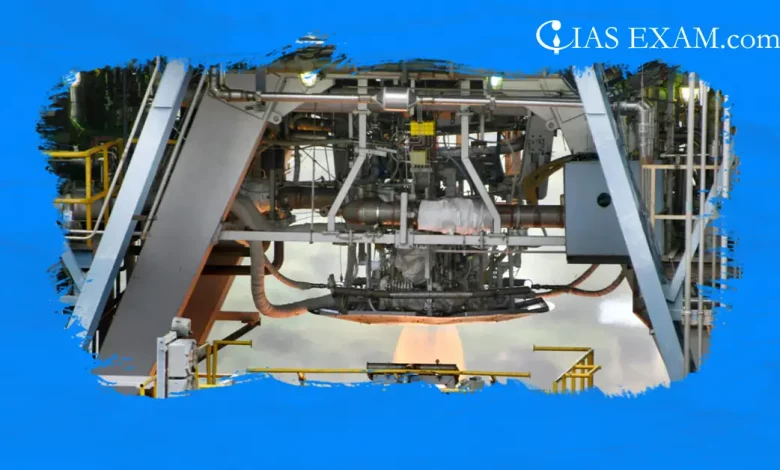Daily Current Affairs for UPSC
Human Rating of CE20 Cryogenic Engine
Syllabus- Science and Technology [GS Paper-3]

Context
ISRO has successfully completed the human rating of its CE20 cryogenic engine, which represents a main boost to India’s attempt to launch humans into space under the Gaganyaan mission.
About the Gaganyaan Mission
- India’s first human spaceflight program, aims to ship astronauts right into a low earth orbit.
- An essential component of this assignment is the concept of ‘human rating’, which refers to the technique of certifying a system capable of effectively transporting humans.
Human Rating of CE20 Cryogenic Engine
- ISRO has accomplished a major milestone in the human rating of its CE20 cryogenic engine, which powers the cryogenic stage of the human-rated LVM3 launch vehicle for Gaganyaan missions.
- In order to qualify the CE20 engine for human rating standards, four engines have gone through 39 hot firing tests under special operating situations for a cumulative length of 8,810 seconds in opposition to the minimal human rating qualification standard requirement of 6,350 seconds.
- The ground qualification tests for the human rating of the CE20 engine involved existence demonstration tests, staying power tests, and overall performance evaluation beneath nominal operating conditions as well as off-nominal conditions with respect to thrust, mixture ratio, and propellant tank stress.
- The final check was the 7th of a sequence of vacuum ignition tests done at the High Altitude Test Facility at ISRO Propulsion Complex, Mahendragiri, to simulate flight conditions.
CE20 Cryogenic Engine
- CE20 Cryogenic engine: It is a rocket engine that uses a cryogenic fuel and oxidizer, which means that each of those components are liquefied gasses that are stored at extraordinarily low temperatures.
- Fuel Used: It typically uses liquid oxygen (LOX), which liquefies at -183 degree C, and liquid hydrogen (LH2), which liquefies at -253 degree C.
- LH2 acts as the gas, at the same time as LOX acts as the oxidizer that explosively reacts with the hydrogen, producing thrust.
- Stage of Usage: They are distinctly efficient propulsion structures with accelerated payload potential and are used in the upper stages of rockets.
- Other Cryogenic Engines: ISRO has used 3 cryogenic engines over time: KVD-1, CE-7.5, and CE-20.
- The last are India-made, despite the fact that the layout of the CE-7.5 is based on the KVD-1, which the Soviet Union supplied to India in the early Eighties.
Importance of CE20 Cryogenic Engine
- It aims to strengthen the higher stage of the human-rated LVM3 automobile and has a thrust capability of 19 to 22 tonnes with a specific impulse of 442.5 seconds.
- ISRO has efficiently completed the popularity tests of the flight engine diagnosed for the primary unmanned Gaganyaan (G1) undertaking, tentatively scheduled for Q2 of 2024.
- The successful human rating of the CE20 cryogenic engine and the L110-G Vikas engine marks a big step toward the realization of the Gaganyaan assignment.
- These tendencies demonstrate ISRO’s commitment to ensuring the safety and fulfillment of India’s first human spaceflight application.
Source: The Hindu





.png)



